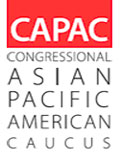
|
|



Website SuggestionsComments? Suggestions? Contact InformationWashington, DC District Office |
Funding Priorities in our CommunitySince becoming a member of the Appropriations Committee, I have new oversight responsibilities for the spending of federal dollars, as well as an increased role in the prioritization of federal spending. For too long, the process of Congressional funding requests – sometimes known as “earmarks” – lacked transparency and accountability, leading some members of Congress to abuse it and the public trust. Since assuming the majority in 2007, Congressional Democrats have instituted wide-ranging reforms, including ensuring that every American can easily determine which member of Congress has submitted a request that receives funding. Below you will find a list of my funding requests that have been included in the appropriations bills our committee has considered so far this year.
Labor, Health & Human Services, and EducationValley Medical Center Emergency Room Ultrasound ($245,000) – Santa Clara Valley Medical Center (SCVMC) is the only safety net hospital in Santa Clara County with an open door policy that guarantees residents access to emergency medical care regardless of their ability to pay. Through its status as a certified Level I Trauma Center and Burn Center, SCVMC also meets the emergency medical needs of patients in neighboring counties. The Emergency Department (ED) at Santa Clara Valley Medical Center currently treats over 80,000 patients per year. These funds will enable SCVMC to acquire two ultrasounds machines with transducers and docking station, two transducer cleaning stations (required by OSHA and JCAHO), transducer cleaning supplies (first year), and teaching modules for its Emergency Department. Valley Medical Center Digital Mammography Unit ($425,000) – Santa Clara Valley Medical Center (SCVMC) has two mammography units that are over 8-years-old and are used to perform over 6,000 screening and diagnostic mammograms as well as over 600 breast biopsies per year. To provide patients with better care, SCVMC desires to replace this equipment with two digital mammography units, with CAD, and an image review workstation where the radiologists can view the digital images and simultaneously compare his or her findings with the CAD system findings. A new digital system would improve diagnosis of breast cancer and would also expedite the exam. Furthermore, as the teaching hospital for Stanford Hospital, UCSF School of Medicine, and other local institutions, it is crucial that SCVMC is able to provide the latest training for the 400 medical students, interns, residents, and fellows who rotate through our hospital each year. Silicon Valley Education Foundation ($200,000) – Funding would provide support for the Silicon Valley Education Foundation’s efforts on Inspiring Education Excellence in Silicon Valley through Teacher Innovation Grants and the Stepping up to Algebra program to advance students in math and provide teacher training. Project Cornerstone ($150,000) – Funds will be used to expand the School Partnerships Program to include 25 additional schools and develop culturally and linguistically appropriate outreach materials. Joint Workforce Investment Transit Academy ($225,000) – This proposal creates a new labor/management Joint Workforce Investment Transit Academy (JWITA) for new and incumbent workers, laying the foundation for increased utilization of the public transportation system in Congressional District 15 ( Santa Clara County, California). The Joint Workforce Investment Transit Academy has a two-pronged approach to workforce development: (1) train and promote incumbent workers up the career ladder, thereby creating a pipeline of living wage, entry level jobs with good benefits; and (2) create new partnerships with community colleges, workforce investment boards, social service agencies, and non profit organizations to do consistent outreach and recruitment to CALWORKS, working poor and disadvantaged community members. Health Trust of Santa Clara County Youth Health Advocate High School Clubs ($95,000) – The vision of Youth Health Advocate High School Clubs is that all high school students are actively involved in transforming Silicon Valley into the healthiest region in America. The YHA project builds on established networks, partnerships and programs of The Health Trust to create a system of health promotion that aligns with school goals for community service, incorporates proven methodologies (including the NIH’s CATCH Kids Club curriculum), and creatively engages youth by tapping into their interests in peer activities, technology skills, and opportunities for service and leadership. Walden West Science Learning Project ($50,000) – Walden West Center will use funds to develop green-science curriculum, provide teacher professional development, purchase laboratory equipment and supplies, and related activities. Children's Discovery Museum of San Jose Student Partners Reaching Kids (SPRK) ($125,000) – The Children's Discovery Museum of San Jose will use funds to expand the Student Partners Reaching Kids program to provide increased access to low-income and high-risk youth. The program emphasizes mentoring and service learning to engage students in the application of real-world science, math, and technology. City of San Jose Regional Homeless Medical Respite Care Initiative ($225,000) – Santa Clara County officials estimate a 2007 homeless population of 7,202 - the majority of whom live in San Jose. Offering a homeless medical recovery program is an innovative approach to the provision of medical services for homeless patients in critical need of government services and access to information. It will help coordinate government programs in a single center to serve the local homeless population. City of San Jose Workplace Literacy Initiative ($100,000)– Start-up one-time funding to initiate a workplace literacy program in the City of San Jose, targeted at improving basic reading and writing skills for service industry workers, with personal instruction and computer training, and post-assessments. Asian Americans for Community Involvement (AACI) Domestic Violence Shelter ($325,000) – For many years AACI has operated on a 13 bed model, where mothers and children share two queen beds and three women share 110 to 120 square foot bedrooms. AACI's current four bedroom shelter has only enough space to reasonably house up to nine clients (up to five women and four children). Given the lack of county shelter beds, AACI has been forced to house as many as 14 clients. AACI is requesting funding to expand an emergency shelter for abused women and their children. In Santa Clara County, AACI's shelter is the only domestic violence shelter that meets the linguistic and cultural needs of the Asian community. Commerce, Justice and ScienceBio-Info-Nano Research and Development Institute (BIN-RDI) ($1,800,000) - The BIN-RDI at NASA Ames Research Center led by the University of California, Santa Cruz will be a focal point in Silicon Valley for bio-info-nano convergence science and technology and will be based on a broad partnership of government, academia, and industry. The BIN-RDI will exert significant national influence on the progression of nanoscale science and technology research, education and socio-economic policy, and it will enhance the research mission of NASA Ames in support of the Vision for Space Exploration. Robotic Exploration Technologies in Astrobiology (RETINA) ($100,00) - RETINA provides comprehensive development and field operations of robotic systems/devices in pursuit of science and technology applications that will advance the mission of NASA's Astrobiology Institute (NAI) in exploring Earth and other worlds. Funds would fill a program void in NAI, which lacks a dedicated technology team that can provide these capabilities. San Jose State University for Training the Next Generation of Weather Forecasters ($115,000) - Funds would be used to continue to develop a field experience class to broaden and enhance the undergraduate experience of B.S. Meteorology students at San Jose State University. The class will enhance students' ability to recognize and forecast as wide an array of weather phenomena as is likely to be experienced in California in the next 30 years, which is expected to change as global climate change continues. Santa Clara County Juvenile Detention Reform ($364,720) - The funding will support a Juvenile Detention Reform Evening Reporting Center, which seeks to systemically reform the juvenile justice system to prevent crime and expand alternatives to youth incarceration. This alternative to detention will provide at-risk youth a program where they will receive a meal, counseling and substance abuse services, recreation opportunities and other skill development training through a cognitive behavioral approach. City of San Jose Police Mobile Identification, Field Reporting, and Records Management Systems ($695,000) - Funds would complete department-wide availability of mobile identification technology, and initiate addition of automated field reporting and upgraded records management systems, to address inefficiencies and enable better analysis and information sharing. Santa Clara County Multidisciplinary Alternative Reception Center ($400,000) – In order to both prevent crime and expand alternatives to youth incarceration, funding would provide a facility for police to refer non-violent minors, where they would be assessed for risk and needs, and either referred to juvenile hall or freed with a Release Plan. The Release Plan would provide immediate referral of minors for cognitive intervention and/or other youth services. San Jose State University Collaborative Response to Victims of Domestic Violence ($440,000) - This project will initiate a new model of collaborative education, training and community response to victims of domestic violence. San Jose State University Foundation will foster interdisciplinary internship team placements in Santa Clara County and the City of San Jose. National Council of Juvenile and Family Court Judges Judicial Education, Research, and Technical Assistance ($1,800,000) - This national project provides juvenile justice professionals, courts and system professionals the state-of-the-art information, training, technical assistance and research which will result in improved decision-making on cases involving at-risk youth. California Department of Justice Vision 2015 Criminal Justice Information Sharing Project ($500,000) - The project will enable the California Department of Justice to deploy mobile live scan devices in police vehicles in Santa Clara County to allow officers to immediately transmit arrestee fingerprints to CADOJ database. This will increase safety as well as save time and resources. Financial Services and General GovernmentSilicon Valley Small Business Assistance Portal ($250,000) - Funding would expand and enhance a “one-stop” web-based tool integrating 40 local public, private, and non-profit partners for business planning, financial resources, regulatory and technical assistance services to small businesses in Silicon Valley. Energy and WaterCoyote and Berryessa Creek ($1,600,000) - for the ACOE for this project. The Coyote Creek project provides protection to the area downstream of Montague Expressway in Milpitas and San Jose where potential damages from a 1 percent flood exceed $250 million. The Berryessa Creek project elements include setback levees, floodwalls, sediment control structures and environmental restoration. The Berryessa portion of the project will protect the area from $202 million in damages from a 1 percent flood. Guadalupe River Flood Control Project ($500,000) - for the Army Corps of Engineers (ACOE) for this multi-phased flood protection project along the Guadalupe River that is an integral component to downtown San Jose's revitalization efforts. San Francisquito Creek ($700,000) - for the ACOE for this study examining possible flood protection measures for the cities of Palo Alto, East Palo Alto, Menlo Park and portions of San Mateo and Santa Clara Counties, while also protecting and enhancing long-term water quality, riparian, fish, and wildlife values. San Jose Area Water Reclamation and Reuse ($8 million) - for the Bureau of Reclamation to help protect the San Francisco Bay environment by recycling 10 million gallons of reclaimed water each day and permit the regional wastewater treatment plant to continue to discharge. San Luis Reservoir Lowpoint Improvement project ($1.4 million) - for the Bureau of Reclamation for the San Luis Reservoir Low Point Improvement Project to increase the operational flexibility of storage in San Luis Reservoir and ensure a high quality, reliable water supply for Santa Clara County and other south of delta contractors. South SF Bay Shoreline Study ($2.8 million) - for the ACOE for this project that will restore the health of the San Francisco Bay, one of the nation's largest estuaries, by creating the largest restored wetlands on the West Coast and providing extensive habitat for federally endangered species and migratory birds. Upper Penitencia Creek Project ($262,000) - for the ACOE for this project that will provide flood protection to over 5,000 homes, schools and businesses in Santa Clara County, specifically the communities of San Jose and Milipitas, with potential damages from a 100-year flood exceeding $455 million, and will provide long term environmental benefits. |






